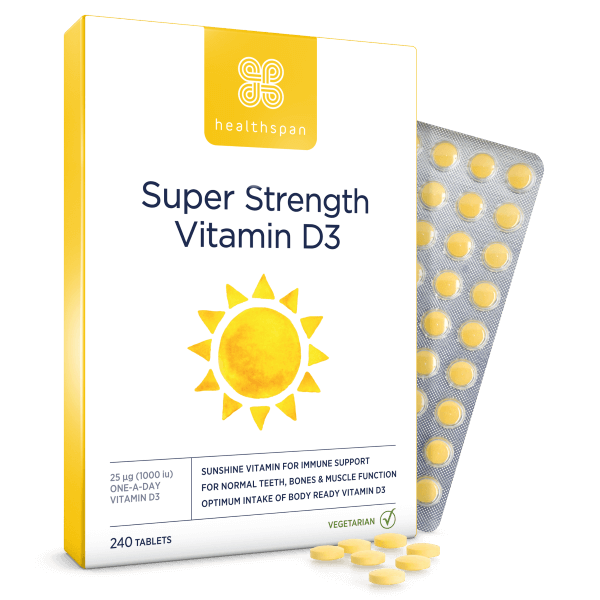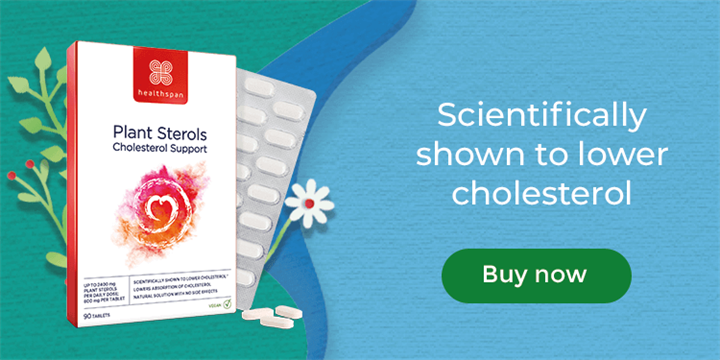Maintaining healthy joints and bones is important, but people are at risk of developing a variety of joint issues as a result of nutrient deficiencies. One particular nutrient that is essential for health – but that we often lack – is vitamin D.
Around half of people in Ireland have sub-optimal vitamin D levels – a concerning number considering these low levels have been linked to bone and joint conditions such as osteoporosis, osteomalacia (or 'soft bones') and an increased risk of bone fractures.1
The symptoms of vitamin D deficiency vary and are often quite vague – and even hidden. Nevertheless, it's essential for our health, so read on to see how to increase your intake to keep your joints healthy.
Who is at risk of vitamin D deficiency?
The latest National Adult Nutrition Survey shows that although only 6.7 per cent of adults in Ireland had levels of vitamin D low enough to be classed as a deficiency throughout the year, more than 40 per cent had levels considered by the Institute of Medicine as inadequate for bone health.2
Certain medical conditions or lifestyle choices can increase your risk further.
This includes people who get very little or no sunshine exposure, and those with darker skin, who should choose vitamin D-fortified foods and supplements all year round.3
If, as advised, you cover up in the sun and use skin products with a high sun protection factor, it's wise to take a vitamin D supplement all year round to bridge the gap.4
Those with coeliac and Crohn's disease, for example, are at risk of vitamin D deficiency because of reduced absorption from the diet.5, 6
Age is another factor. The older you get, the more difficult it becomes to synthesise vitamin D in your skin, so it's important to consider taking a vitamin D supplement to prevent deficiency.
The HSE says that children between one and four years old need 5 micrograms of vitamin D as a supplement every day for a few months each year – and recommend that this is given from Halloween (31st October) to St Patrick's Day (17th March).7
How does vitamin D affect bones?
Vitamin D plays many roles in the maintenance of strong, healthy bones. One key role is the absorption and regulation of calcium levels. Calcium is not only essential for bones, but also for muscle contraction, nerve impulses and secretion of hormones.8
Vitamin D controls how much calcium is absorbed from food into the body, as well as affecting how much calcium is excreted through the kidneys. Your body prioritises your serum calcium levels over your bones, so if there isn't enough calcium in the blood, vitamin D will remove calcium from the bones to correct it.9
This means that if you aren't getting enough vitamin D, your calcium levels may drop, which can increase your risk of osteoporosis and fractures associated with low bone mineral density.10
When you do have enough calcium, vitamin D acts directly on osteoblasts – the cells that lay down calcium in the bones. Sufficient vitamin D is therefore particularly important for building bone density, as well as maintaining it.11
However, vitamin D isn't just important for maintaining strong bones. It also plays an important role in your overall health by inhibiting many of the inflammatory processes that can occur in the body. Inflammation is both a contributing factor and an aggravating factor in many conditions, so avoiding deficiency is incredibly important.12

Super Strength Vitamin D3
For healthy bones, teeth, muscles and immunity
- 25mcg vitamin D per tablet
- Helps keep bones, teeth and muscles healthy, and supports immunity
- Multiple health benefits from €0.06 a day
How to boost your vitamin D levels naturally
There are plenty of ways to boost your vitamin D levels naturally. One way is through increasing sunlight exposure.
When the skin is exposed to sufficient UVB light, the body will go through the process of producing vitamin D. So, the easiest way to support vitamin D production is to get yourself out into the sun. (How long for depends on how much skin is exposed, how intense the sunlight and the colour of your skin – most experts recommend between 9 and 25 minutes, for the fairest to darkest skin tones respectively.)
However, in winter it's particularly important to consume vitamin D through your diet. Foods that contain vitamin D include eggs, oily fish and foods that are fortified with vitamin D.13 Mushrooms that are exposed to UVB rays can also contain a good amount of vitamin D.14
Taking a vitamin D supplement is a convenient way to ensure you are getting enough, particularly if you are at risk of deficiency.
Ultimately, keeping your vitamin D levels sufficient can help not only your bone health, but also your overall health. From food to supplementation, it's important to make sure you're getting enough vitamin D from a variety of sources.






